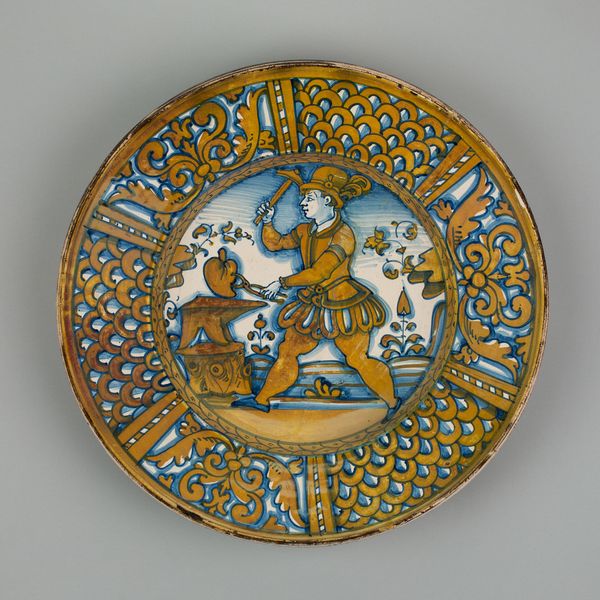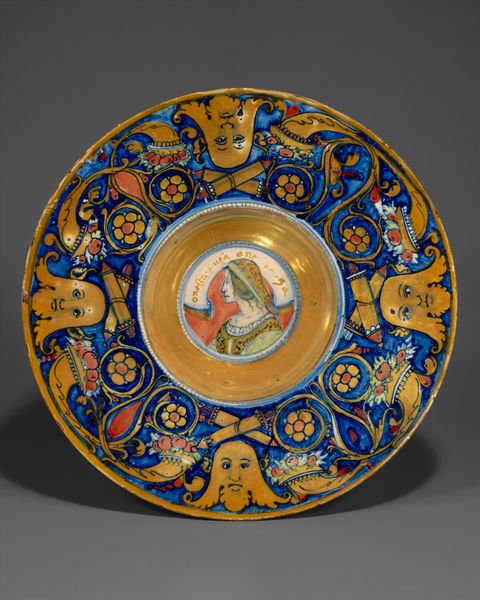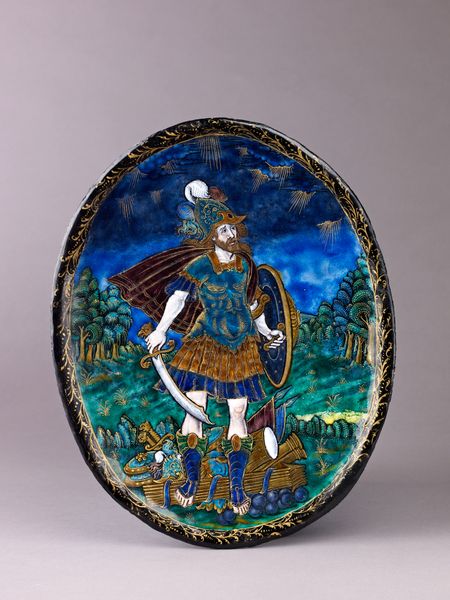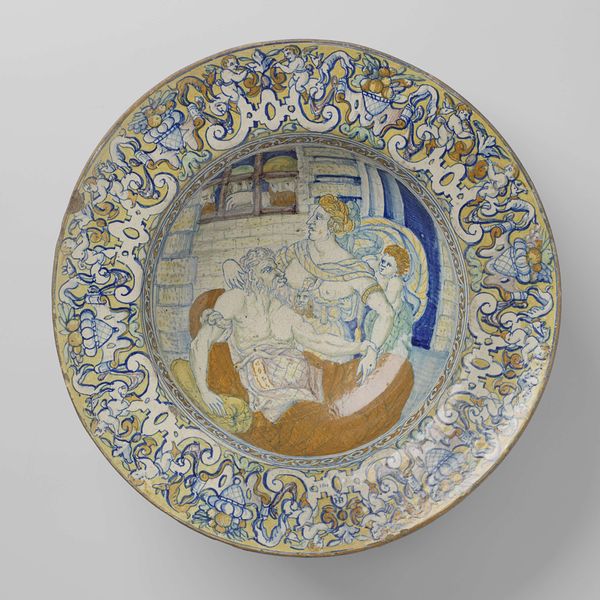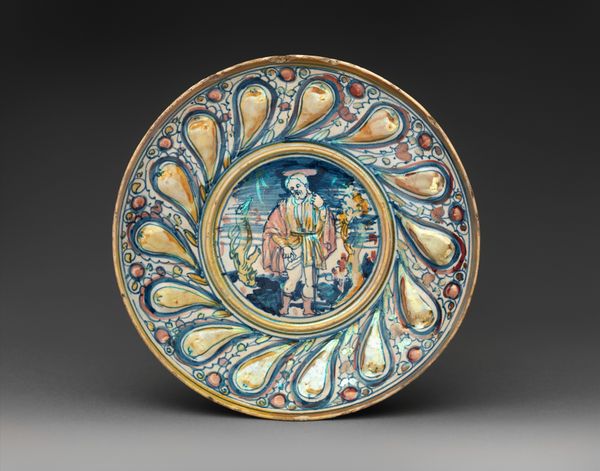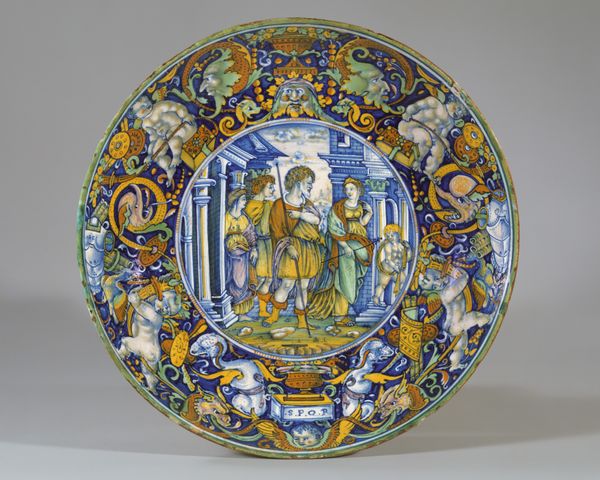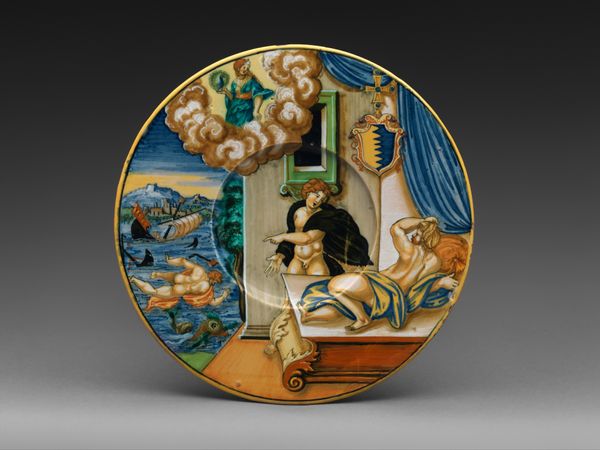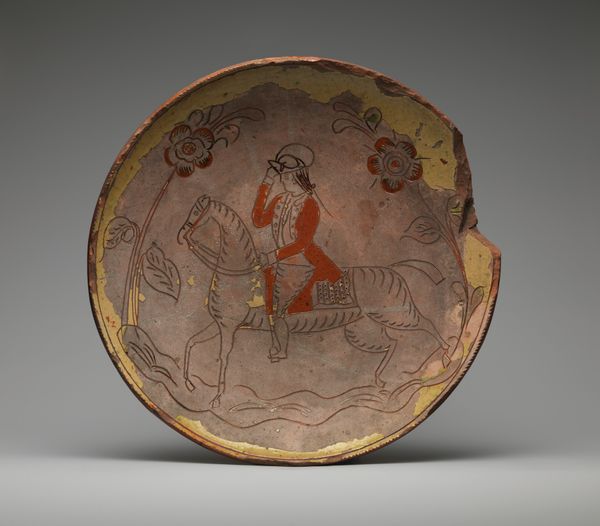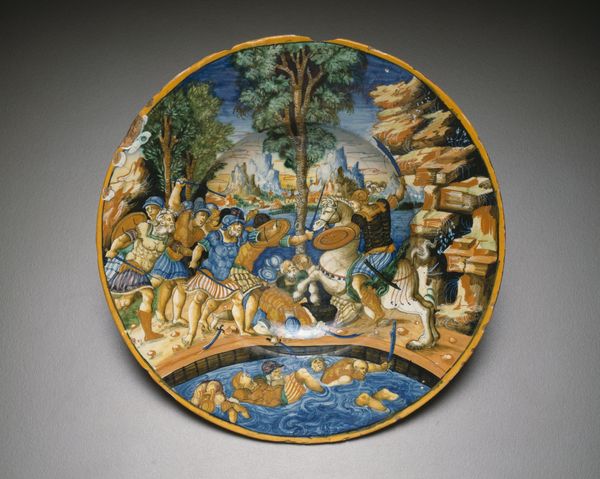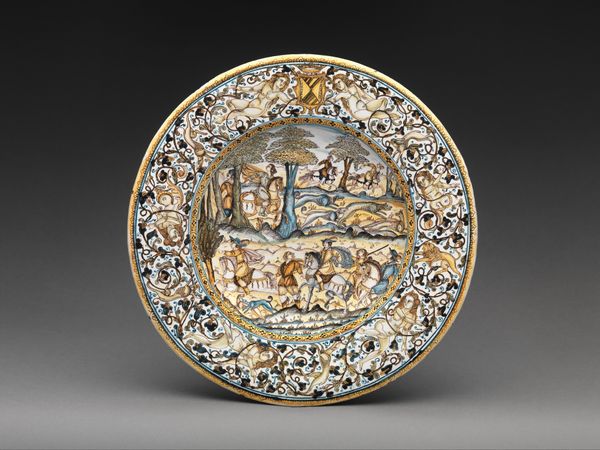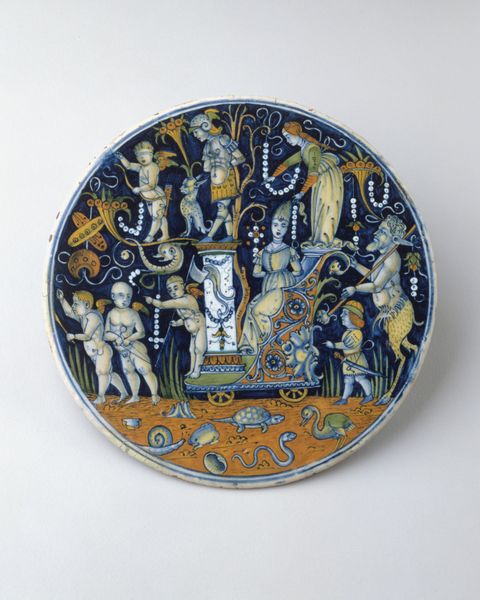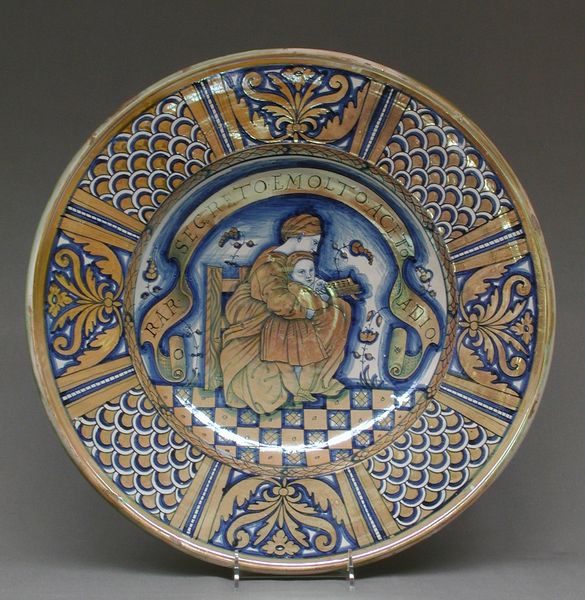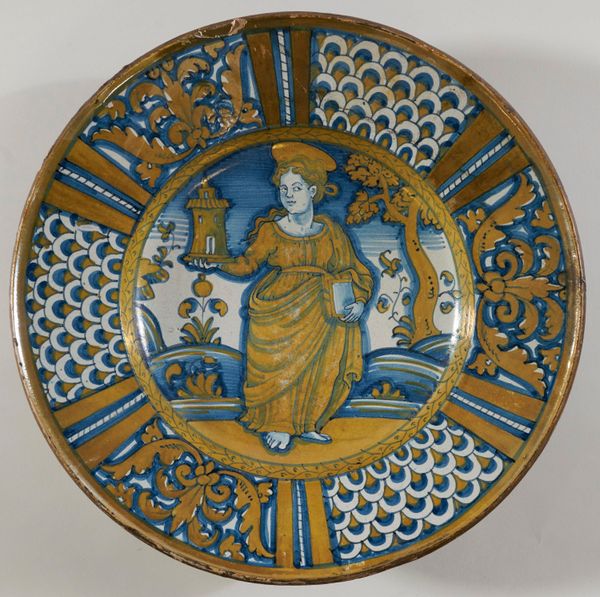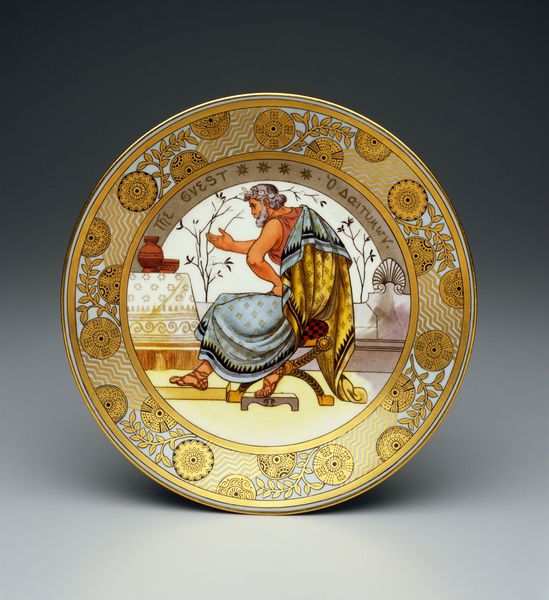
ceramic
#
pottery
#
ceramic
#
figuration
#
ceramic
#
history-painting
#
italian-renaissance
Dimensions: Diameter: 10 1/4 in. (26 cm) Mount: 3 in. × 5 5/8 in. × 10 3/4 in. (7.6 × 14.3 × 27.3 cm)
Copyright: Public Domain
Curator: This striking ceramic dish, dating from 1532, is attributed to Francesco Xanto Avelli da Rovigo. Known as a "coppa," it currently resides at the Metropolitan Museum of Art. Editor: It's incredible. The colors, especially that vibrant blue against the earth tones, are quite striking, and the narrative… dramatic, wouldn’t you say? The scale of the figures to the circular surface is masterfully rendered to focus our eyes on this frenzied scene of human figures seemingly struggling to release from serpent bindings. Curator: Precisely! What you're seeing is likely a scene from classical mythology or perhaps even early interpretations of power and knowledge. The male figure is centrally positioned within architectural columns—and note how the use of classical themes reflect the broader cultural preoccupations of the Italian Renaissance and this artist’s influences. These motifs, steeped in privilege and learned, also perpetuate certain social and philosophical doctrines regarding status and the prevailing power paradigms of that time. Editor: The glaze application and firing process—it must have demanded considerable skill. Notice how the textures created aren’t merely decorative. This artist is demonstrating that craft can elevate itself, making its product speak to grand subjects—and elevate itself—perhaps reflecting an ambition toward social advancement? Curator: Absolutely, we must think about Avelli as negotiating existing structures—both the social structures of artistic patronage, and the pre-existing stories available for representation in this new medium. These stories and artistic conventions both bolster and confine Avelli. It's such an entanglement, of medium, story, identity, and ambition. Editor: These Renaissance workshops remind us that artmaking is an industry. Someone designed this, shaped it, fired it, sold it. The ceramic process itself is bound to this history. Who handled it, owned it, ate from it—we can’t forget that labor. Curator: Right, these historical works carry stories that remain pertinent to how we examine the complexities of social inequality and art's place in representing, perpetuating, or, indeed, challenging that power. Editor: Considering the context surrounding art-making illuminates those systems, whether it's the societal values ascribed to labor or craft and materials. I like how it shows those values as part of the art object itself, like inherent to the narrative.
Comments
No comments
Be the first to comment and join the conversation on the ultimate creative platform.
